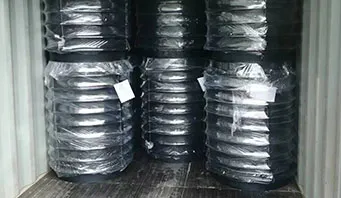
Jul . 11, 2024 12:51 Back to list
Diagram of Boiler for Hot Water System with details of components and functions
A hot water boiler diagram illustrates the components and operation of a system that provides heated water for various purposes. These boilers are commonly used in residential, commercial, and industrial settings to provide a source of hot water for heating, showers, cleaning, and more.
The diagram typically includes a few key components that work together to heat and distribute the water. First, a fuel source such as gas, oil, or electricity is used to heat the water in the boiler. This heat is transferred to the water through a series of coils or tubes that run through the boiler.
Once the water is heated, it is stored in a tank or cylinder until it is needed. A pump is used to distribute the hot water throughout the building, whether it be through radiators, underfloor heating, or a hot water tap. A thermostat regulates the temperature of the water in the boiler to ensure it stays at the desired level.
Safety devices such as pressure relief valves and temperature sensors are also commonly included in the diagram to prevent over-pressurization or overheating of the system.
Hot water boilers come in various types and designs, including traditional boilers with a tank and newer tankless models that heat water on demand

hot water boiler diagram. Each type has its own advantages and disadvantages, depending on the specific needs and preferences of the user. In addition to providing hot water for heating and other purposes, hot water boilers can also be used in industrial processes such as brewing, food processing, and chemical production. The ability to control the temperature and flow of hot water is crucial in these applications to ensure product quality and safety. Overall, a hot water boiler diagram is a helpful tool for understanding how these systems work and how they can be used in various settings. By having a clear picture of the components and operation of a hot water boiler, users can make informed decisions about the type of boiler that best meets their needs and how to properly maintain and care for it. In conclusion, hot water boilers play a crucial role in providing a source of heated water for a variety of applications. Understanding the components and operation of these systems can help users make informed decisions about their use and maintenance. Whether used in residential, commercial, or industrial settings, hot water boilers are an essential tool for ensuring a reliable and consistent supply of hot water.

hot water boiler diagram. Each type has its own advantages and disadvantages, depending on the specific needs and preferences of the user. In addition to providing hot water for heating and other purposes, hot water boilers can also be used in industrial processes such as brewing, food processing, and chemical production. The ability to control the temperature and flow of hot water is crucial in these applications to ensure product quality and safety. Overall, a hot water boiler diagram is a helpful tool for understanding how these systems work and how they can be used in various settings. By having a clear picture of the components and operation of a hot water boiler, users can make informed decisions about the type of boiler that best meets their needs and how to properly maintain and care for it. In conclusion, hot water boilers play a crucial role in providing a source of heated water for a variety of applications. Understanding the components and operation of these systems can help users make informed decisions about their use and maintenance. Whether used in residential, commercial, or industrial settings, hot water boilers are an essential tool for ensuring a reliable and consistent supply of hot water.
Share
Latest News
-
Oil Fired Hot Water Boilers Sale - High Efficiency & Affordable
NewsJul.31,2025
-
High-Efficiency Commercial Oil Fired Steam Boiler for Industry
NewsJul.30,2025
-
High-Efficiency Biomass Fired Thermal Oil Boiler Solutions
NewsJul.30,2025
-
High Efficiency Gas Fired Thermal Oil Boiler for Industrial Heating
NewsJul.29,2025
-
High-Efficiency Gas Fired Hot Water Boiler for Sale – Reliable & Affordable
NewsJul.29,2025
-
High Efficiency Biomass Fired Hot Water Boiler for Industrial and Commercial Use
NewsJul.29,2025
Related PRODUCTS
Copyright © 2025 HEBEI HONGZE BOILER MANUFACTURING CO., LTD. All Rights Reserved. Sitemap | Privacy Policy






















